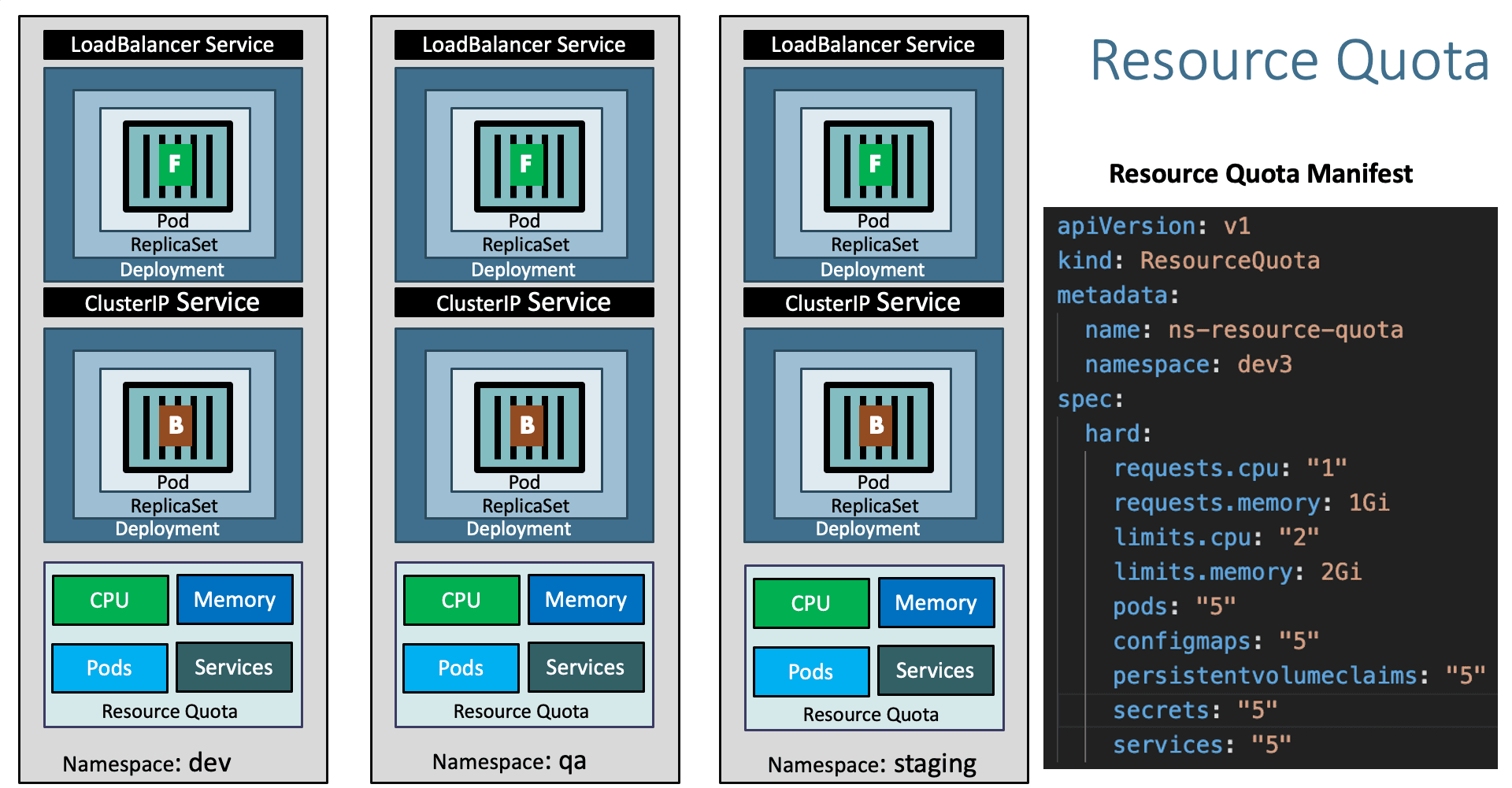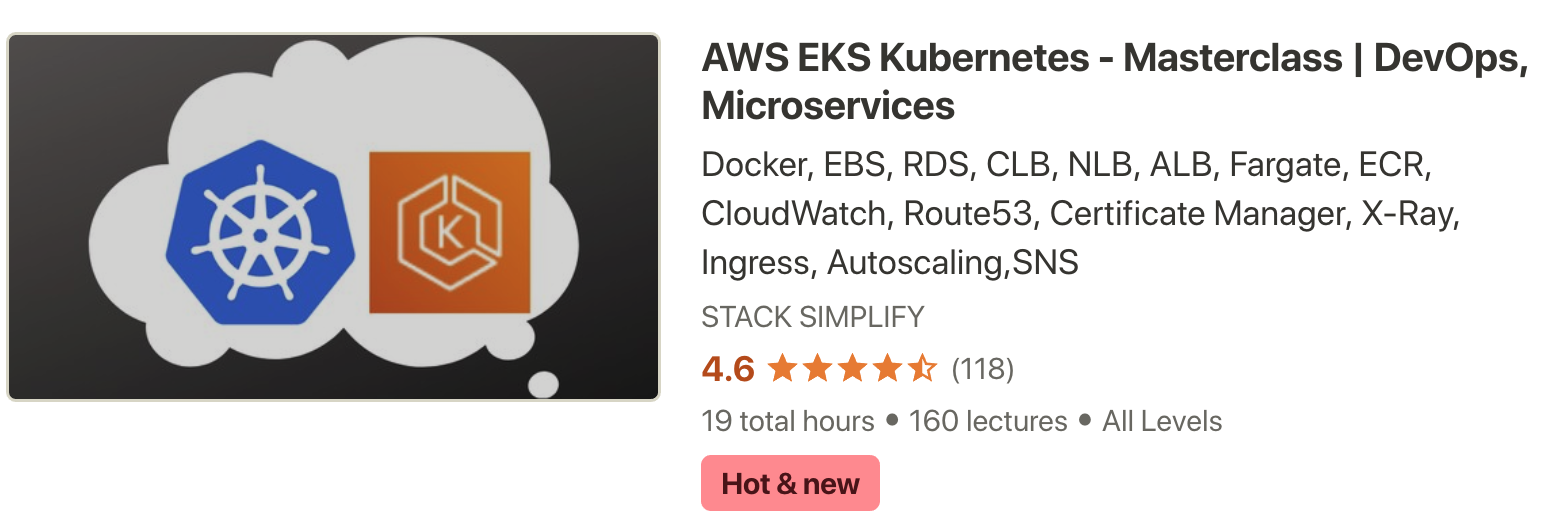Kubernetes Namespaces - ResourceQuota - Declarative using YAML

Step-01: Create Namespace manifest
- Important Note: File name starts with
00- so that when creating k8s objects namespace will get created first so it don't throw an error. apiVersion: v1
kind: Namespace
metadata:
name: dev3
Step-02: Create ResourceQuota manifest
apiVersion: v1
kind: ResourceQuota
metadata:
name: ns-resource-quota
namespace: dev3
spec:
hard:
requests.cpu: "1"
requests.memory: 1Gi
limits.cpu: "2"
limits.memory: 2Gi
pods: "5"
configmaps: "5"
persistentvolumeclaims: "5"
secrets: "5"
services: "5"
Step-03: Create k8s objects & Test
# Create All Objects
kubectl apply -f kube-manifests/
# List Pods
kubectl get pods -n dev3
# View Pod Specification (CPU & Memory)
kubectl get pod <pod-name> -o yaml -n dev3
# Get & Describe Limits
kubectl get limits -n dev3
kubectl describe limits default-cpu-mem-limit-range -n dev3
# Get Resource Quota
kubectl get quota -n dev3
kubectl describe quota ns-resource-quota -n dev3
# List Service
kubectl get svc -n dev3
# Access Application
http://<Public-IP-from-List-Services-Output>/app1/index.html
Step-04: Clean-Up
- Delete all k8s objects created as part of this section
# Delete All
kubectl delete -f kube-manifests/
References:
Additional References:






